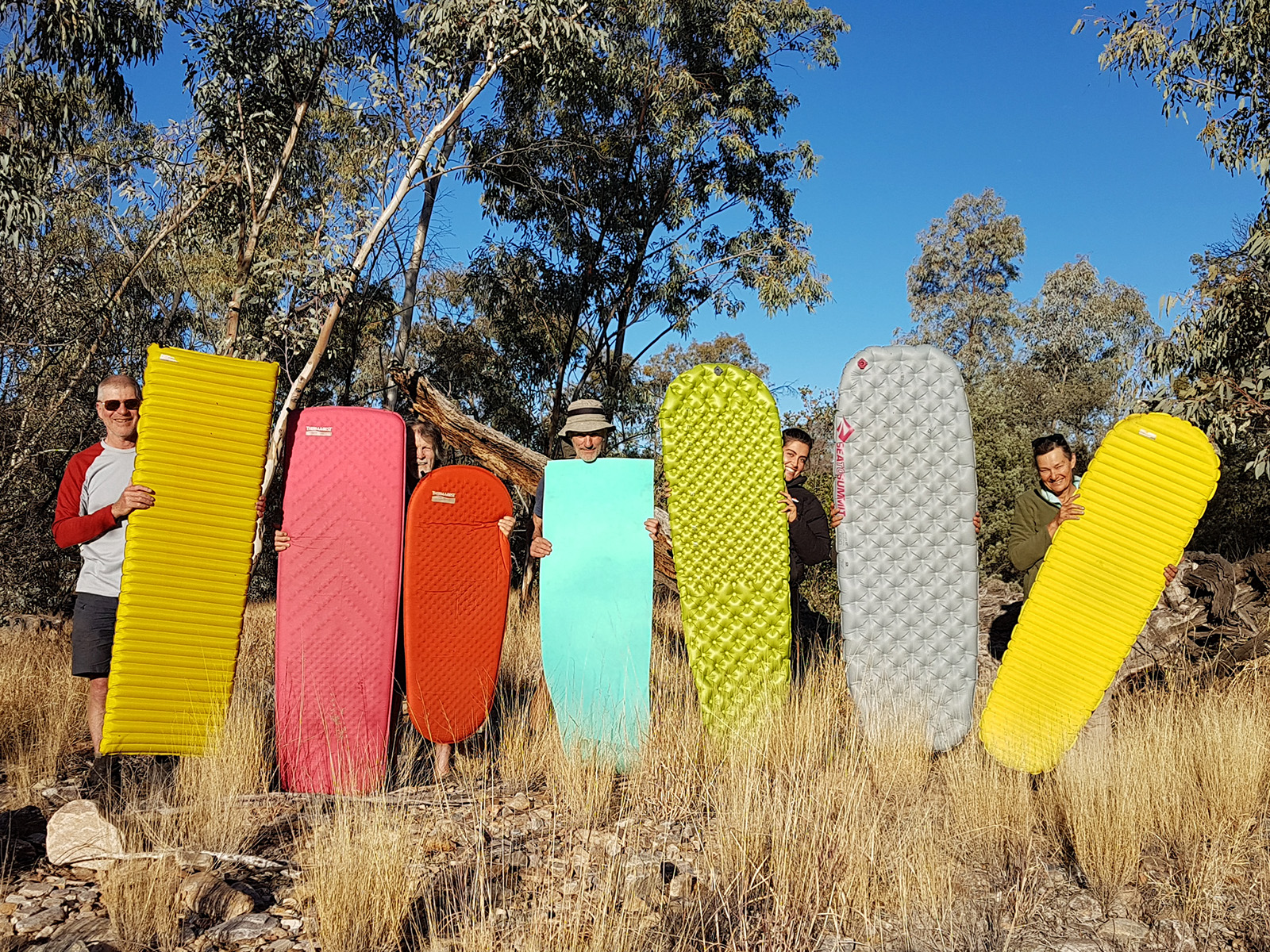Reading Time: 2 minutes
A mat or pad provides insulation by preventing heat transfer. The level of insulation provided is indicated by the “R value”. The higher the R value the better the insulation.
It is essential to have adequate insulation between the sleeping bag and the ground, particularly if camping on snow.
Sleeping directly on the tent floor is cold, hard and very uncomfortable. Sleeping bags on their own offer very little insulation and no padding underneath as the soft fill flattens under body weight.
Sleeping mats (closed cell foam)
Closed-cell foam mats are made from dense foam comprising thousands of airtight bubbles with the following characteristics:
- Basic and therefore low cost
- Provide good insulation and are lightweight
- Some have a metallic, heat reflective layer on one side for added warmth
- Can be used as a seat around camp without fear of puncturing
- Not particularly comfortable to sleep on
- Bulky as they don’t compress
- Can catch on scrub and be damaged if tied to the outside of a pack, leaving a leaving a trail of foam pieces.
Self-inflating pads
Self-inflating pads (e.g. Thermarest™) are made of airtight fabric bonded to open-cell foam with the following characteristics:
- A valve for inflation and deflation.
- When the valve is opened air is sucked in when the foam inside expands
- If left long enough the mat will fully inflate, but may require a few extra breaths to reach a desired firmness
- Provide greater comfort and warmth than closed-cell mats
- Require a little effort to expel the air to pack away.
- Can puncture (repair kits are available).
Air-filled pads
Air-filled pads (e.g. Exped™, Sea to Summit™) are made from airtight fabric with internal chambers and have the following characteristics:
- Inflation valves (some have a separate deflation valve)
- Lightweight and pack down much smaller than the alternatives
- Chambers can be inflated using a special pump sack. This is recommended to avoid moisture from breath entering the pad.
- Some models have an incorporated pump, but these can be slow to use and add weight.
- Those filled with synthetic fibres or down provide a higher R rating and provide excellent insulation on snow
- Extremely comfortable
- Expensive
- Can puncture (repair kits are available)
- Can be noisy to sleep on.
Considerations when selecting a mat or pad
- Season and locations where it will be used most, e.g. on snow or for general bushwalking
- Longer mats/pads provide insulation under more of the body
- Weight increases with length and varies with shape
- Longer pads are bulkier and take up more space when packed
- Mats are just unrolled while sleeping pads must be inflated
- There is a considerable difference in cost between a simple foam mat and a winter-rated sleeping pad.
Storing sleeping pads
Self-inflating mats are best stored inflated with the valve left open to ensure the foam ‘memory’ is retained. This allows the interior to dry and makes them easier to fully inflate at next use.
Insulated air-filled mats are best stored loosely rolled, but can be stored in their stuff sacks once cleaned and dried.
Tips
- Thin groundsheets or space blankets do not provide sufficient insulation.
- Camping air mattresses are too heavy, can puncture easily and the air volume inside allows convection so they don’t provide good insulation.
- A small stick in the wrong spot makes for an uncomfortable night. It is important to remove sticks and stones from the ground surface below the sleeping pad to maximise comfort and avoid punctures.
- Foam mats are best carried rolled loosely inside the pack with gear packed into the centre.

